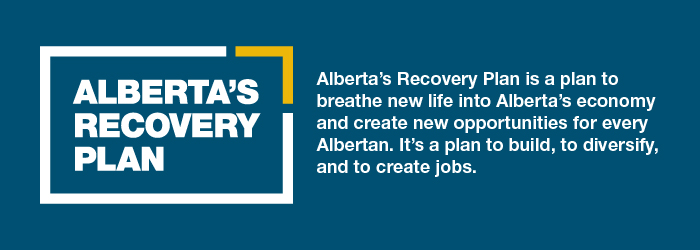If passed, Bill 49, the Labour Mobility Act will make it faster and easier for Canadians seeking to move to Alberta to have their professional credentials recognized so they can start a new job or open a new business.
The act will apply to more than 100 regulated occupations in Alberta, such as optometrists, engineers, dentists, accountants, and skilled trades. It is a further step in Alberta’s leadership in eliminating barriers to interprovincial trade and mobility.
This legislation is a key part of Alberta’s Recovery Plan, a bold plan to create jobs, diversify the economy and strengthen the workforce with skilled workers in all sectors of the economy.
“Alberta’s economy is coming back stronger than ever but we need to have enough workers to make that happen. The Labour Mobility Act will help make Alberta a magnet for skilled professionals by making it easier for them to come to our province and have their credentials recognized. If passed, this bill will lead to more jobs, a stronger workforce and a faster economic recovery.”
According to a 2020 C.D. Howe Institute report, improving labour mobility could add approximately $2.8 billion per year to Alberta’s GDP. Internal barriers to free trade within Canada are also estimated to cost the economy as much as $130 billion per year, with barriers to labour mobility between provinces being one of the costliest restrictions.
“Now more than ever, we need to remove barriers that prevent the free flow of Canadian talent from bringing their skills and their businesses to Alberta. This announcement is a key part of Alberta’s Recovery Plan, designed to recruit skilled Canadian certified workers to our province to support economic growth and create jobs that benefit future generations of Albertans.”
“With Alberta job creators struggling to find workers, this legislation comes at a crucial time. The proposed process would provide timeliness, transparency and accountability for employers and employees alike.”
“One of the biggest challenges facing Alberta businesses is attraction and retention of workers – including skilled workers and trades. Economic growth and diversification hinges on the ability of employers to acquire the people they need, when they need them. By reducing red tape and adding increased accountability and transparency, the proposed Labour Mobility Act gives a needed boost to businesses struggling to bring essential workers to the province.”
“Alberta can be the most attractive and competitive place in Canada for talent, business, and capital. Ensuring that those who come here can use their skills to the fullest of their ability is part of how we do that. It's also simply the right thing to do. Alberta must be a place where we invite everyone to contribute with their full selves - it enhances our community, economy and human dignity. Alberta is also already facing a labour shortage in key areas, and internal barriers to trade and labour mobility cost us over $11 billion per year. Enhancing labour mobility can help with both.”
Quick facts
- Combined with the acceleration of the Job Creation Tax Cut and Alberta’s plan to eliminate all procurement exceptions under the Canada Free Trade Agreement, Alberta will have one of the freest and most competitive economies in North America.
- If passed, the legislation will come into force upon proclamation.
- The proposed Labour Mobility Act would help standardize and streamline processes to recognize the credentials and training of out-of-province certified workers. This includes:
- requiring that Alberta regulators register qualified Canadians who meet all the criteria established in the regulation
- introducing maximum timeframes for registration decisions
- requiring appeal processes and processes for internally reviewing applications
- determining what information/documentation types or quantities regulatory authorities can request
- defining offences and financial penalties for contravening the act
- requiring documentation and fees be available on a publicly accessible website
